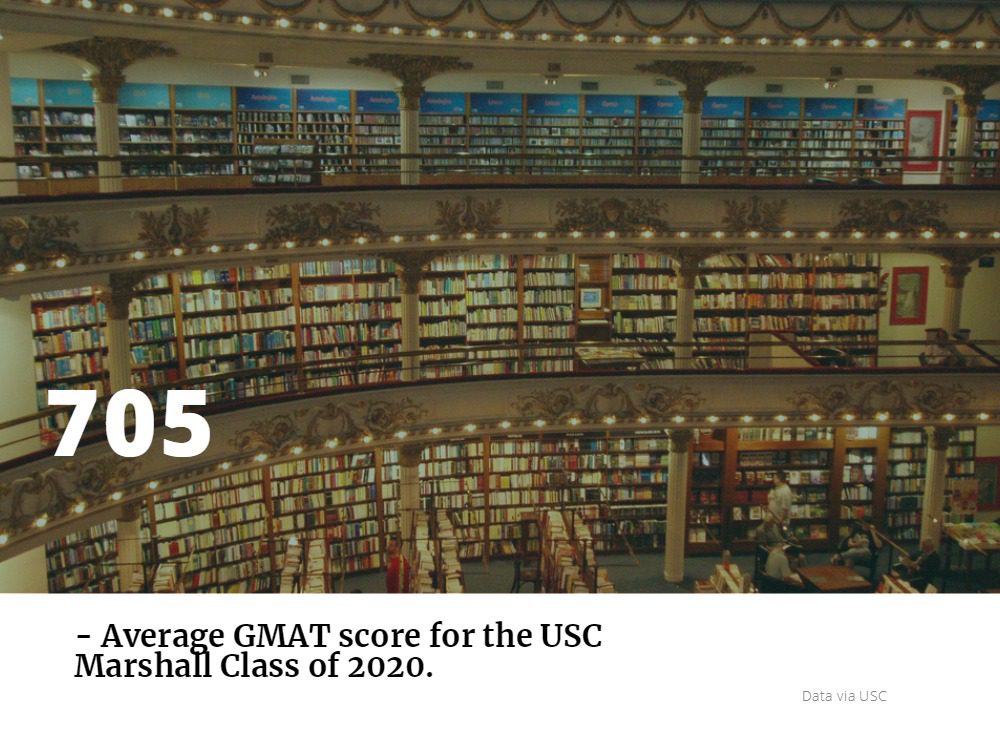One Year Later: MBA Program Gender Parity at USC Marshall

Last fall, USC Marshall became the first top-tier MBA program to reach gender parity with the full-time MBA Class of 2020 having as many women as men. It was a massive 20-point percentage increase from the previous year when women made up just 32 percent of the class.
Now that almost a year has gone by, we wanted to reach back out to USC Marshall to see how reaching gender parity has affected this year’s class, the new recruiting season, the business marketplace, and more.
To gain insight into what’s happening at the school, we spoke with Evan Bouffides, assistant dean and director of MBA admissions, as well as Mark J. Brostoff, the assistant dean and director of graduate career services. They both offered unique perspectives on the impact of USC gender parity at the Marshall School of Business.
USC Marshall Class of 2021 Recruiting
While the Class of 2021 recruiting season is still ongoing, it’s not possible to gain a full picture of how achieving gender parity has affected the upcoming class, though Bouffides has witnessed a few changes.

Evan Bouffides, Assistant Dean and Director MBA Admissions, USC Marshall
“This year, industry-wide, many U.S. business schools were down in application volume, but USC Marshall received about the same number of applications as last year,” says Bouffides. At the same time, the “quality has gone way up.” As they’ve been reviewing applications for the Class of 2021, Bouffides believes the candidates have been stronger—both men and women.
Now, while that improvement cannot solely be laid at the feet of gender parity, it’s certainly a factor. Gender parity has made candidates more enthusiastic. Other factors include the continued improvement of USC Marshall’s rankings as well as the overall trajectory of the MBA program.
One thing that hasn’t changed is how Marshall is recruiting MBAs—with one exception.
After achieving gender parity last year and admitting the largest number of underrepresented minorities ever, USC Marshall has set their sights on international diversity, and particularly, international female diversity. “This is where we’re lagging behind,” explains Bouffides. “So, we concentrated our 2021 recruiting efforts on traveling to certain parts of the world including Africa, South East Asia, and Latin America where we haven’t gone before or often.”
Beyond that, Marshall held the same recruiting events as last year, including the third annual International Women’s Day Celebration Event in February. The event was extraordinarily well attended with even more enthusiasm this year over last.
Inside the First 50/50 Class
As for what’s happening with the class who achieved gender parity, you wouldn’t notice much difference from any previous class except that there are more women.
“If you break down the Class of 2020 into geography, academic area, or prospective career, there really isn’t a marked difference between students,” says Bouffides. “There’s definitely a story to be told being a class of 50/50 men and women, but we don’t know what that story is yet.”
What Marshall does know is that there has definitely been a positive vibe when it comes to having a gender equal MBA class. People appear to be generally happy with the achievement, and diversity and inclusion have been bigger than ever.
One noticeable change is the increase in women in leadership in the 40 MBA clubs and organizations. Women have always tended to take on more of those leadership roles, but now it’s even more recognizable.
Women in the Business Marketplace
As for the business marketplace, “obviously, there’s excitement about the fact there’s gender parity,” says Brostoff. And while it hasn’t opened up any floodgates in regards to internship recruiting or getting on the radar of new companies, there has been quite a bit of positive reaction. This is especially good news considering the Forté Foundation’s latest research, which revealed that gender inequality impacts almost half of all MBAs in the workplace.

Mark Brostoff, Assistant Dean and Director, USC Marshall Graduate Career Services
“We’ve had quite a few companies decide to start recruiting at USC Marshall when they might have been a little more hesitant in the past,” Brostoff explains. And while he wouldn’t lay all that success on the back of gender parity, it’s played a role, especially for tech companies.
Tech companies have been under the microscope recently for their obvious lack of gender equity, particularly in light of the #MeToo movement. And though those companies aren’t setting specific targets or quotas for the number of female employees they need, the fact that USC Marshall has so many female MBAs coming up is quite attractive. “Companies appreciate the opportunity to increase their gender inclusion initiatives,” says Brostoff.
As for what the career center is doing to continue this positive gender parity trajectory for the school, they’ve been looking to create more and more opportunities for women in business. For example, they recently hosted a new case competition on women in business, and they’ve been able to engage more female alumni and female executives to come to campus.
We’ll continue to keep an eye on gender parity at USC Marshall and keep you updated as we learn more.
This article has been edited and republished with permissions from its original source, Clear Admit.
Inside the History-Making Full-Time MBA Class of 2020 at USC Marshall

Announced at the end of July, the incoming full-time MBA Class of 2020 at the USC Marshall School of Business is making headlines across the country. Graduating exactly 100 years after the business school’s first cohort, the USC Marshall MBA Class of 2020 has made history as the first cohort at a top-ranked business school to feature more women than men.
Even without history-making demographics, the new 2020 cohort is a diverse group. Two-hundred and twenty one of the 2017 applicants were accepted, making an acceptance rate of 28 percent. The students come from a wide variety of backgrounds, and though the majority (25 percent) had an undergraduate major of business/commerce, also present are students with undergraduate degrees in engineering/computer science (18 percent), the humanities (17 percent), and economics (16 percent). At an average age of 28 years, the new USC students have an average of five years of work experience.
A look at the academic profile of the typical USC student reveals the programs competitive nature and commitment to rigorous academics. On average, incoming students had an undergraduate GPA of 3.50 and a GMAT score of 705.
In addition to gender, diversity represents itself in the 2020 cohort through the 30 percent of international students, representing 31 different countries around the world, including Iran, Israel, Ethiopia, Egypt and Pakistan, to name a few. About 21 percent of students from the United States are also made up of underrepresented minority groups.
Of course, the school’s achieving of gender parity is probably the most notable thing about this incoming class. Women have always been an underrepresented group within business and business schools—according to the AACSB, between 2012 and 2017 the number of women working towards full-time MBA degrees was below 38 percent. This reveals a huge contrast for women MBAs versus those in other graduate degree programs, where women make up over 50 percent of most graduate classes.

An overall look at the USC Marshall MBA Class of 2020 already reveals the ways more women in a program can have a broader impact on the school and the student’s future careers. “This year’s applicant pool was the strongest in our program’s history,” commented assistant dean and full-time MBA director at Marshall, Evan Bouffides. “They brought the highest GMAT score and the highest average GPA. The women in particular were extraordinarily well prepared.”
There may be a number of reasons why the number of women in MBA programs has historically remained low. Different studies have looked at factors like the time it takes to complete an MBA degree, work experience required, and the overall return on investment. Reasons may also reflect the gender pay gap, which makes the return on investment significantly lower for women, who studies show could make anywhere from 3 percent to 36 percent less than their male counterparts.
YOU MAY ALSO LIKE: The Best U.S. Employers for Women
Thankfully, schools like USC understand the benefits that women MBA graduates can add both to the school and workforce. Over recent years, the university has taken purposeful measures to increase gender diversity among applicants, such as programming focused on women. The investment of creating diversity at business schools mirrors an overall focus on diversity throughout the business world, which means that schools like Marshall can get ahead of the game in creating a diverse and appealing talent pool for employers.
“With more than 50 percent of our 2020 class women, it gives us a talent pipeline that employers are hungry to tap into as they go about increasing the diversity of their executive staffs,” said Mark Brostoff, Assistant Dean and Graduate Career Services Director at Marshal. “Recruiters are very happy with this great news.”
